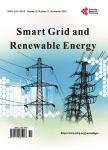Forecasting the Demand of Short-Term Electric Power Load with Large-Scale LP-SVR
Forecasting the Demand of Short-Term Electric Power Load with Large-Scale LP-SVR作者机构:Department of Computer Science School of Engineering and Computer Science Baylor University Waco USA Department of Electrical and Computer Engineering Autonomous University of Ciudad Juárez (UACJ) Ciudad Juárez México Science Applica- tions International Corporation El Paso USA.
出 版 物:《Smart Grid and Renewable Energy》 (智能电网与可再生能源(英文))
年 卷 期:2013年第4卷第6期
页 面:449-457页
学科分类:1002[医学-临床医学] 100214[医学-肿瘤学] 10[医学]
主 题:Power Load Prediction Linear Programming Support Vector Regression Neural Networks for Regression Bagged Regression Trees
摘 要:This research studies short-term electricity load prediction with a large-scalelinear programming support vector regression (LP-SVR) model. The LP-SVR is compared with other three non-linear regression models: Collobert’s SVR, Feed-Forward Neural Networks (FFNN), and Bagged Regression Trees (BRT). The four models are trained to predict hourly day-ahead loads given temperature predictions, holiday information and historical loads. The models are trained on-hourly data from the New England Power Pool (NEPOOL) region from 2004 to 2007 and tested on out-of-sample data from 2008. Experimental results indicate that the proposed LP-SVR method gives the smallest error when compared against the other approaches. The LP-SVR shows a mean absolute percent error of 1.58% while the FFNN approach has a 1.61%. Similarly, the FFNN method shows a 330 MWh (Megawatts-hour) mean absolute error, whereas the LP-SVR approach gives a 238 MWh mean absolute error. This is a significant difference in terms of the extra power that would need to be produced if FFNN was used. The proposed LP-SVR model can be utilized for predicting power loads to a very low error, and it is comparable to FFNN and over-performs other state of the art methods such as: Bagged Regression Trees, and Large-Scale SVRs.



